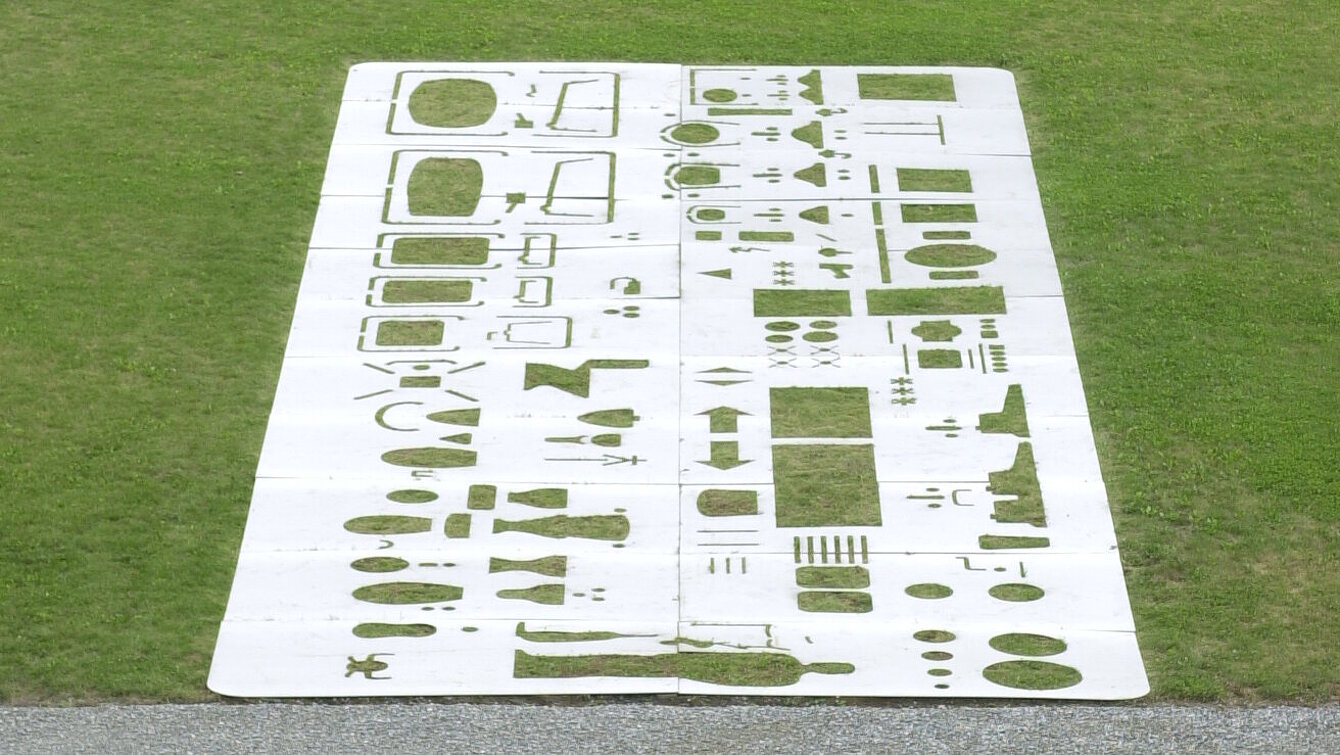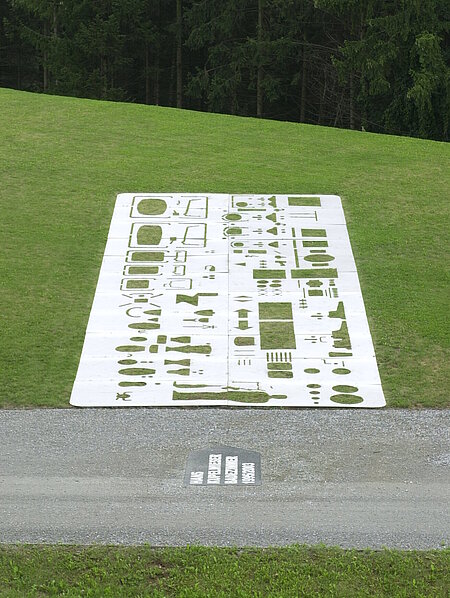The cut-outs in the steel plate are standardised symbols for elements in wet rooms. The outline of a human can also be recognised in Kupelwieser’s Badezimmer. This seems to be a systematic inventory of everyday bathroom objects that could function as the code of a language. Badezimmer clearly visualises the difference between natural growth (the soft grass growing in the empty spaces) and the culturally moulded (the shapes of the symbols bordered by hard steel).
Badezimmer [Bathroom]
Hans Kupelwieser, 1995/2003


Image Credits
Author
Christa Steinle
Location on map
Position 40
Owner
Österreichischer Skulpturenpark Privatstiftung
Artist biography
Hans Kupelwieser
Show all
About the sculpture
Hans Kupelwieser’s career as a sculptor started at the Academy for Applied Arts in Vienna, with art and media theoreticians Bazon Brock and Peter Weibel. Thus his concept of sculpture defined itself from the beginning on the basis of a media approach, enabling him to operate freely between various media, material and functions.
His sculptural concerns are formulated in photography, furniture design, writing and the digital medium, photograms, and in the techniques of inkjet, digital airbrush and computer animation. He works with all kinds of material, such as rubber, steel, glass and paper, and each work process is subject to a precise conceptual analysis. In the operative language field, material and media will fuse to become linguistic or indexical sculptures, which become particularly effective in the form of flat pictorial ground sculptures.
In the ground sculpture entitled “Badezimmer” (bathroom), Kupelwieser uses architecture-based templates to cut standard symbols for wet rooms and a life-size human silhouette into the large-scale steel slab, which fulfils its function in the medium of architectural drawing. The empty spaces, through which the cut grass becomes visible, refer ex-negativo to the presence of steel and seem like geometrical ornaments in a carpet.
It is an abstract material sculpture, the perforation lines of which, at closer inspection, can be deciphered to be an indexical information system of object symbols. In this intertwinement of material, form, function and linguistic operation, the co-ordinates in Kupelwieser’s sculptural field of action meet, irritating in their ambivalence of nature (soft grass) and culture (hard steel), an image as a negative of a sculpture and sculpture as a positive of a picture – this again being a photographic paradigm.


















